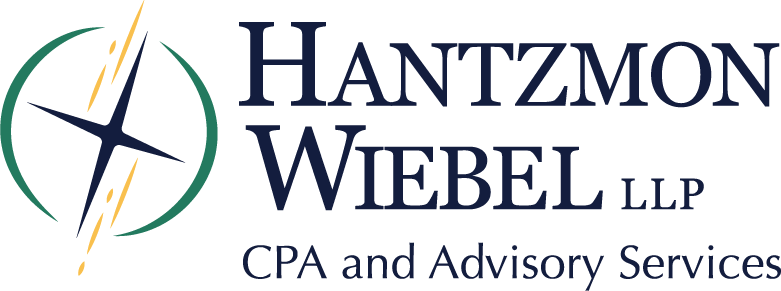For all of the craziness and unpredictability of the past year, 2020 turned out to be a big year for mergers and acquisitions (M&A).
Not surprisingly, the business world stood still at the beginning of the pandemic as companies focused on keeping their businesses running and their employees safe. But the second half of the year brought a surge in M&A activity, according to Bain’s 2020 M&A Year in Review.
Deals that were shelved were reconsidered with a focus on customer demands in the new post-pandemic reality. Unprecedented levels of stimulus money helped stabilize some sectors and made financing possible, and low interest rates persisted.
Bain reports that global deal value rose by more than 30% in the third and fourth quarters of 2020, and more than 28,500 deals were closed by the end of the year for a total value of $2.8 trillion. As of early June 2021, global M&A activity was up 158% over the same period last year, according to Fortune.
While U.S. deal-making didn’t quite keep up with global volume, U.S. dealmakers were busy—and continue to be optimistic. Sixty-one percent of respondents to Deloitte’s most recent M&A Trends Survey believe that U.S. M&A activity will return to pre-COVID levels within the year, with a significant focus on domestic deals.
Trend Watch
Bain’s research suggests that the pandemic accelerated some existing M&A trends.
Buying new capabilities: The pandemic created an urgency to acquire new capabilities that support a digital economy. For example, companies acquired targets that provide or augment technological capabilities for online ordering and delivery, payments, telemedicine, and teleconferencing.
Partnering for innovation: Many companies also turned to alliances and joint ventures as alternatives to traditional M&A. The development of the COVID-19 vaccine is an excellent example of competitive pharmaceutical companies partnering to accelerate research and development (R&D). Similarly, several car manufacturers invested in common battery technology, sharing the required R&D investment in hopes of reaping the benefits of accelerating development of a common standard.
Looking local: More deals were done locally and regionally during the pandemic, which likely reflects supply chain concerns. Nearly 60% of respondents to the Bain survey said that localizing their supply chains will be a significant factor in deals going forward.
ESG focus: Acquiring companies also paid more attention to the environmental, social, and governance (ESG) approaches of their targets, assessing both risks and opportunities. A recent Deloitte survey reported that 72% of respondents believe that a diverse makeup of a target company’s workforce, including representation of women and minorities, is either important or very important in the target selection process. For many deal makers, this represents a new category in their due diligence process.
Digitizing due diligence: Bain reports a majority of M&A players found it more challenging to manage deals during the pandemic, resulting in the adoption of online platforms for collaboration, risk analytics, and insights. Using new data sources to create profiles and find target companies also accelerated.
Increased valuations: Deal multiples increased in 2020, according to Bain. Certain industries thrived during the pandemic, including technology, telecommunications, digital media, and pharmaceuticals. Other industries, such as retail and energy, saw weaker valuations as fewer consumers shopped in stores and lockdowns dampened travel.
The Crystal Ball
Bain’s survey respondents expect M&A to account for nearly half of their revenue growth over the next three years, which is up 30% over the past three years.
What is the fuel for this activity? Morgan Stanley suggests several drivers.
Plentiful capital: The U.S. is emerging from the pandemic, the stock market is strong, and companies and consumers seem confident. Persistently low interest rates are expected to keep the cost of capital down. If this combination of factors continues, deal flows could keep increasing.
Private equity firms are flush with cash, and this “dry powder,” as Morgan Stanley calls it, may spark transactions. Also, special purpose acquisition companies (SPACs), which are shell companies created to take private companies public, will likely remain a significant force in the M&A arena, representing an interesting alternative to traditional IPOs or private sales.
Rebound in COVID-affected sectors: A clearer vision of the future is finally surfacing for businesses that were heavily impacted by the pandemic, such as transportation and energy. This clarity makes valuations and deal pricing easier, and pent-up M&A demand in these industries may burst through as the outlook continues to improve.
Increasing scale: Bigger was generally better during the pandemic, so companies may continue to look for operational scale. This may drive consolidation in some industries.
Nimble Always Wins
Perhaps the biggest takeaway from last year’s M&A activity and the surge in 2021 is this: nimble wins. Companies—and their leaders—that were able to pivot, make quick decisions, and take advantage of unique opportunities have survived and thrived.
Executives are learning from the past year and are eager to pounce on the right opportunities for growth moving forward. Smart executives always have their ears to the ground when it comes to M&A. They’re actively listening and seeking out what’s next for their growth strategy, whether that’s buying, selling, or partnering.
Sharing strategy and vetting ideas with a trusted team can help dealmakers find the right opportunities and be ready to strike at the right time. Don’t hesitate to call on your advisors for input and assistance.
Our team is ready to help you. Contact us to discuss your next step.
Sources: Bain & Company, M&A Report 2021; Deloitte, M&A Trends Survey: The Future of M&A; Morgan Stanley, M&A in 2021: An Accelerating Rebound.
Contact Us
Disclaimer of Liability
Our firm provides the information in this article for general guidance only, and does not constitute the provision of legal advice, tax advice, accounting services, investment advice or professional consulting of any kind. The information provided herein should not be used as a substitute for consultation with professional tax, accounting, legal or other competent advisors. Before making any decision or taking any action, you should consult a professional advisor who has been provided with all pertinent facts relevant to your particular situation. Tax articles are not intended to be used, and cannot be used by any taxpayer, for the purpose of avoiding accuracy-related penalties that may be imposed on the taxpayer. The information is provided “as is,” with no assurance or guarantee of completeness, accuracy or timeliness of the information, and without warranty of any kind, express or implied, including but not limited to warranties of performance, merchantability and fitness for a particular purpose.
Blog
Nonprofit Insights

